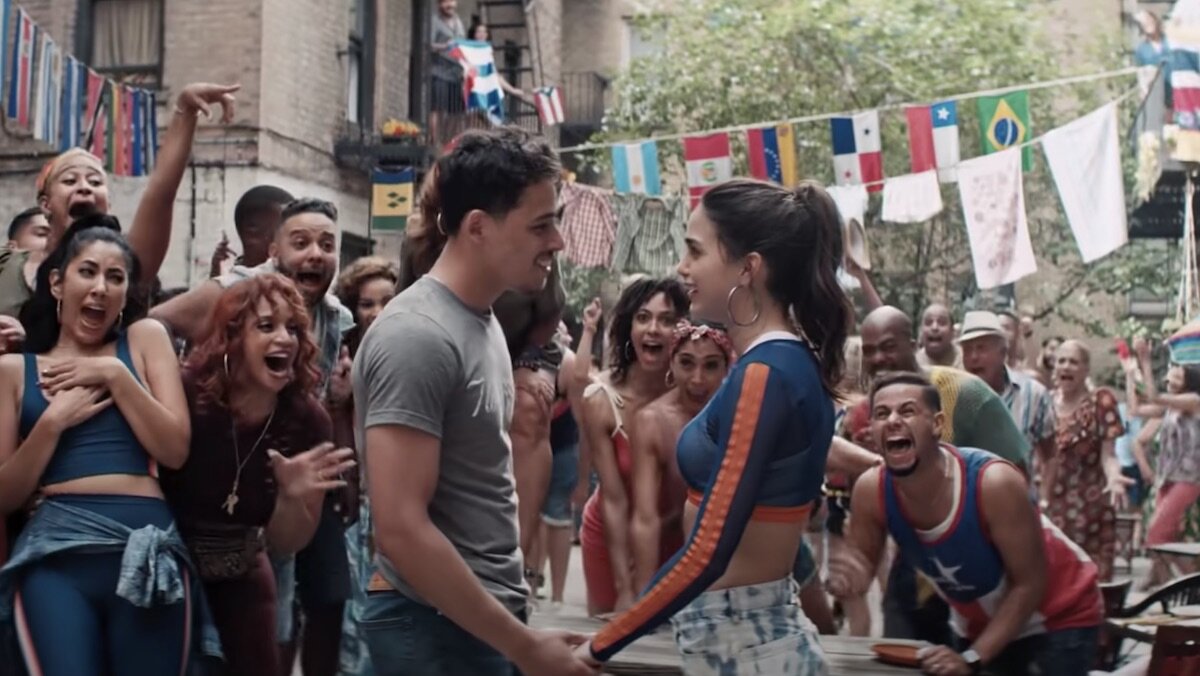Advance: THE SPARKS BROTHERS
Directing: B+
Writing: B+
Cinematography: B+
Editing: B+
How have I never heard of this band, or duo—or duo who fronts various iterations of a band—until now? These guys have been around for ages: formed in 1967, first of twenty-five albums in 1971, the current year, 2021, is the fiftieth anniversary of their debut release, Halfnelson. The Sparks Brothers of the title are Ron and Russel Mael, aged 22 and 19 when they first formed as a music act, aged 75 and 72 today. And, judging by this Edgar Wright-directed documentary, their just-below-the-radar relevance to rotating generations of fans has remained fairly consistent over five decades.
It’s strange to discover artists who clearly, wildly influential for the first time so late in their career. This film will clearly hit differently for people who know who these guys are than it will or people like me, who didn’t even know they existed. I only know about this movie because I received an invite to a virtual advanced screening. (It opens in theaters tomorrow.) But as the promotional material states, they are “your favorite band’s favorite band.” I guess they don’t necessarily expect us to know about them: this film introduces them. It also features countless singers, actors, comedians and other personalities who are very familiar and eager to talk about them.
One thing that really struck me was the clear similarity with one of my own favorite pop duos, the Pet Shop Boys: also consisting of a singer and a synth player. Pet Shop Boys broke out in 1986, when Sparks had already been around for two decades. Sparks even veered into synth-heavy pop with one of their many creative left turns in 1979 with an album called No. 1 in Heaven (incidentally, produced by legend Giorgio Moroder, reigniting Sparks’s career the same way he did with Daft Punk’s Random Access Memories in 2013, thirty-four years later). A brief story is told in this film of Pet Shop Boys’s Niel Tennant being approached backstage at a show and asked, “Why don’t you acknowledge Sparks?” According to this account, Tennant was rather dismissive, which I found deeply disappointing.
I can’t even decide if I am likely to find Sparks’s music all that appealing. It’s their overall story that is so fascinating, here in one of the better music documentaries in recent memory. The editing and many artistic flourishes make it almost impossible to look away from the moment it starts, even if you’ve never heard of these guys. Edgar Wright goes through their story chronologically, basically album by album, and with 25 albums to date that’s a lot to cover. The final run time is two hours and fifteen minutes, quite long by documentary standards—but believe me, the time goes by quickly. There are no lulls in this narrative, as Sparks’s musical directions take regular wild turns, never in service of great commercial success and alway in service of creative fulfillment.
As a singer, Russell’s vocals make me think of an odd blend of Freddie Mercury and Monty Python, often high-pitched and androgynous in sound. As a composer and lyricist, much is made of Ron’s often comic sensibility—one of the interview subjects in the film is Weird Al Yankovic—something that evidently made it difficult for many to take them seriously as artists early in their career. And if The Sparks Brothers the film is your introduction to them, diving into that massive back catalog can be daunting. But, there’s something else this film makes clear: their career moves so many wildly different musical directions, it’s nearly guaranteed you won’t possibly like all of their stuff. And yet, they have so much of it, you could probably cherry pick the stuff you do like and still have a good amount to explore.
It can be almost surreal, seeing clips from the vast archive of footage of these brothers performing, and the countless other artists they bring to mind. It’s easy to think about it backwards, as though they are the ones being influenced. But these guys are true originals, with every seemingly recognizable reference point pre-dating whatever you think it’s referencing by several years. I’m amazed the two evidently have gotten along working so closely together all this time. It makes you wonder if they’re even human. There’s not a hint of resentment or animosity between them; they respect each other and work well together, and are widely, deeply respected by countless others in their industry.
Early on in the film, one interview subject comments on how he almost doesn’t even want to watch this film, because the longstanding mystery of Sparks is a big part of their appeal. I would argue this film makes it worth dispelling at least some of the mystery. It’s all of 135 minutes out of fifty-four years, after all. These guys, and this film, are absolutely worth your attention, and when it’s done there’s still plenty of mystery to go around.
Russell and Ron, enduring weirdos.
Overall: B+










